 Pluteus section Celluloderma - click to expand
Pluteus section Celluloderma - click to expand
No sac volva. Growing on wood. This section does not smell of
radish and does not have the jester capped pleurocystidia. The microscopic
cap cuticle is composed of rounded elements, which makes the cap
susceptible to wrinkling. (There may also be elongated elements like
section Hispidoderma, but that section should not have any rounded
elements). Usually they are colourful
and have a smooth cap, but they might have a felty or fibrillose cap like
section Hispidoderma, so if you don't have a microscope, also
check that section.
Species
mentioned: Pluteus fulvibadius, fulvobadius, romellii, chrysophlebius, rugosidiscus, aurantiorugosus, phaeocyanopus, thomsonii, tomentosulus, nanus, hispidulus, podospileus, inflatus
Pluteus fulvibadius (fulvobadius) OR (P. 'romellii' misapplied) - brown,
yellow-brown (or occasionally just yellow) cap, often wrinkled
and sometimes felty. It has a somewhat yellow stem and young gills. Similar Pluteus leoninus
group mushrooms are hard to tell apart without a scope, but are more likely to have a felty/velvety
cap and won't be
wrinkled (as they are not in this section). Authors that studied PNW collections
noted that P. fulvibadius had differently shaped cystidia than the very similar EU
mushroom Pluteus romellii, and suggested we should probably be using our
local species name instead of the EU name (as everybody has been using the EU
name for our collections). I can confirm that DNA sequences from BC, OR and WA
are distinct in ITS from EU sequences of P. romellii by about 1% or so,
and our local sequences mostly differ from each other in ambiguous locations
only. We don't have a type sequence of P. fulvibadius, but a recent
paper has confirmed that this is the proper name of our local species. As to the spelling, Murrill originally spelled it "fulvibadius". Subsequent
Latin scholars corrected it to "fulvobadius" for reasons that are
unclear, so other Latin scholars have now argued to change it back. Some collections, at least in CA, have green tones in the
young caps, but they do not have unique sequences and are considered the same
species.
Pluteus vellingae CA -
widely distributed across the world and now sequenced from BC in the PNW. It is
"challenging to differentiate" but more slender and its young gills are
white or only slightly yellow.
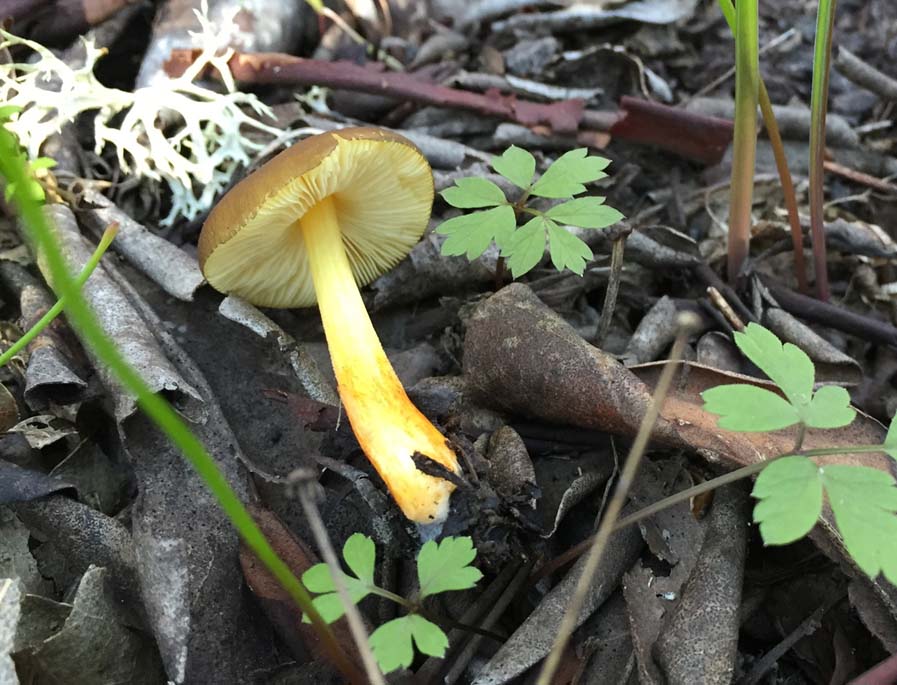
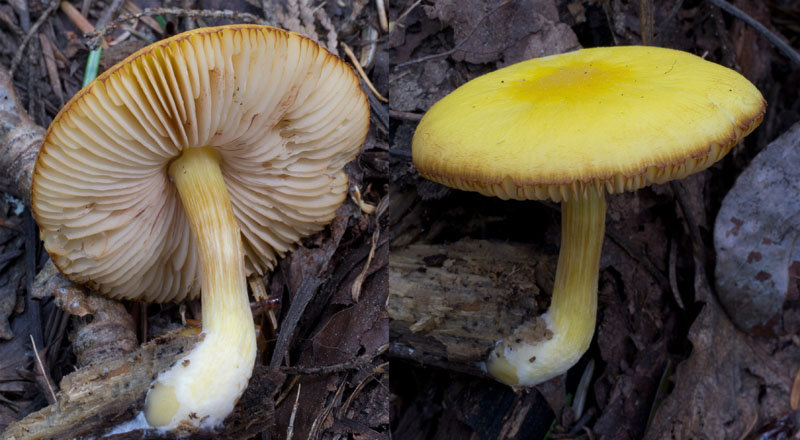

Pluteus fulvibadius © Jonathan Frank and Andrew Parker (2 images),
Pluteus vellingae © Marshall Archibald
Pluteus chrysophlebius SC - somewhat similar to P. fulvibadius,
but usually entirely
bright
yellow to orange-yellow with a bright yellow stem coloured like the
cap. Although a related species exists back east and here, this clade has been
determined to be the actual species.
Pluteus 'chrysophlebius PNW20' - a sister species found both back
east and here. I don't know yet how to differentiate it.
Pluteus rugosidiscus VA - a sister species said to have a green tinge
to the cap, also from back east, differing by 5% in ITS. Many people thought
this was a synonym of P. chrysophlebius. Collections with a green tinge
to the cap have been reported from the PNW so we need greenish collections to sequence to
see if we have this species here too.
Pluteus
aurantiorugosus EU - a lovely deep orange capped species, but
with a white to pale yellow stem. East coast sequences differ from EU sequences
by 4-6 bp or so, but a study was unable to find any ecological or morphological
differences so it is thought they are all one species. Our one WA collection
matches EU sequences.

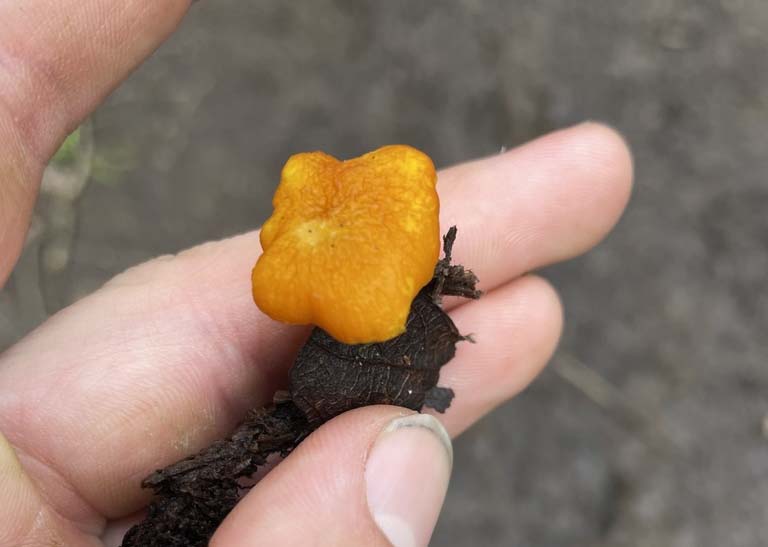
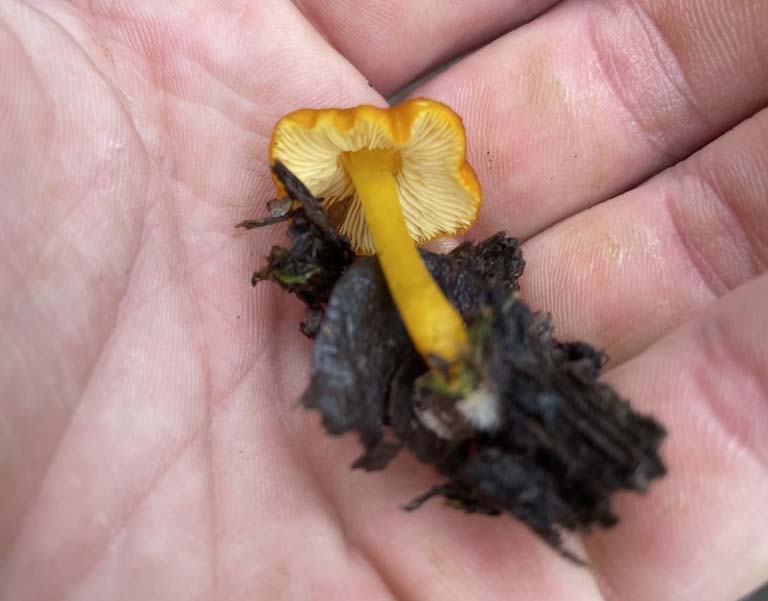
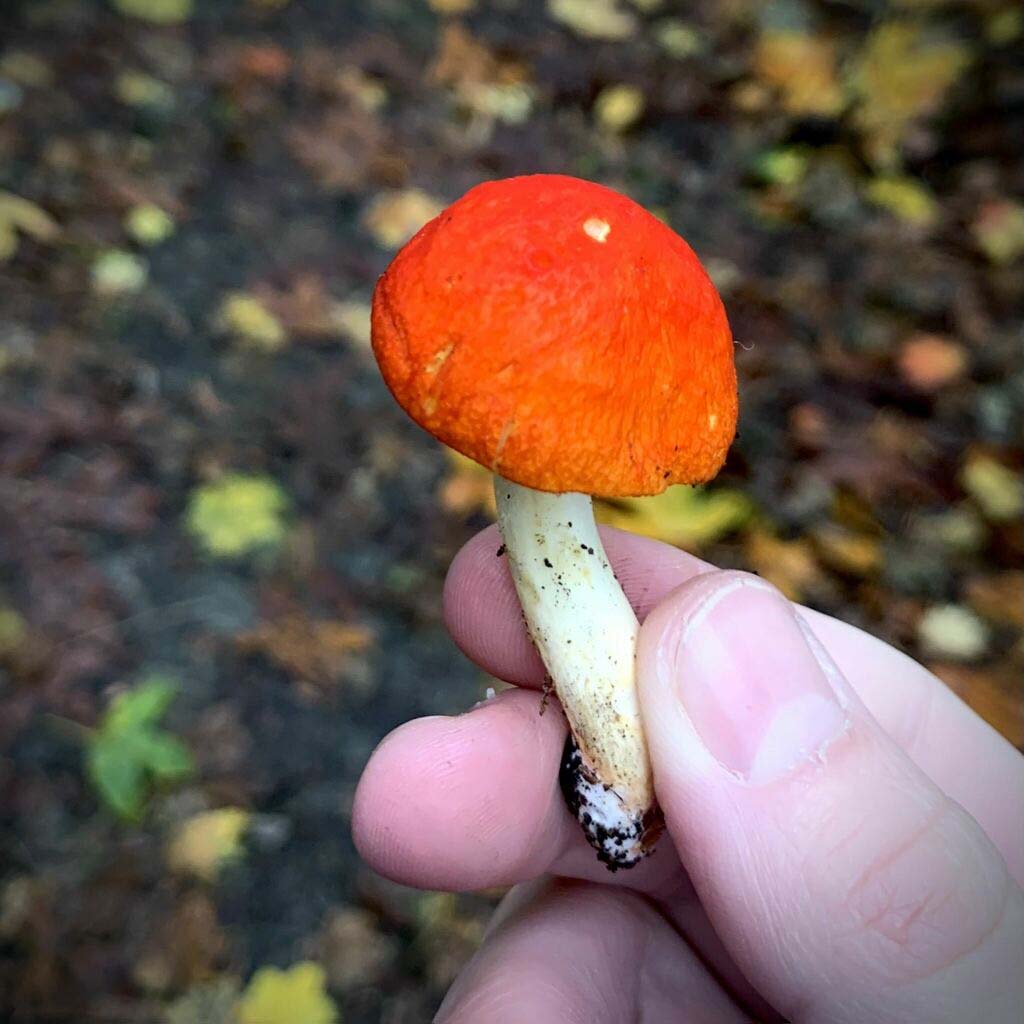
Pluteus chrysophlebius © Yi-Min Wang, P. 'chrysophlebius
PNW20' © Zane Walker (2 images), P. aurantiorugosus © Peter Sheff
Stems with a bluish tinge
Pluteus phaeocyanopus
CA - a dark brown cap with a paler stem that turns appreciably blue
when handled. Interestingly, this species is in a different section than our
paler capped bluing species, Pluteus salicinus, which means that
Psilocybin has evolved in Pluteus multiple times. It is a CA oak species
probably found in at least OR as well, but we need local collections and
reliable CA type collections too (the paratype sequence we have is pretty
clearly corrupt).
Pluteus 'nanus PNW01' -
not as dark capped and only slightly bluing. Sequences of P. nanus in Europe differ by as much as 2%, so it may be one
species with some genetic variation or it may be a species complex. Several
forms and varieties have been described, so perhaps they correspond to the
different sequences. Three sequences in California and one in Oregon are a
sister species about 4% different from all of them. Unfortunately, it is mostly a
drab grey-brown mushroom best recognized microscopically, except for
slightly bluing grey stem and roundish spores (many but not all
look round from some angles, others are somewhat elliptical).
Pluteus 'nanus PNW02' -
one WA collection also sequences about 4% different in ITS from all of the
above. The photo shows perhaps a slight blue-grey tinged stem, but not
nearly as much as the closely related P. phaeocyanopus above. It too has
roundish spores.
Pluteus 'nanus PNW15' -
a dark cap like P. phaeocyanopus but with cottonwood and willow,
with a slight bluish tinge.
Pluteus 'nanus PNW16' -
known from a single BC sequence, no photo or information
Pluteus 'nanus PNW17' -
known from a single BC sequence, no photo or information
Pluteus 'nanus PNW18' -
known from four BC sequences, no photo or information
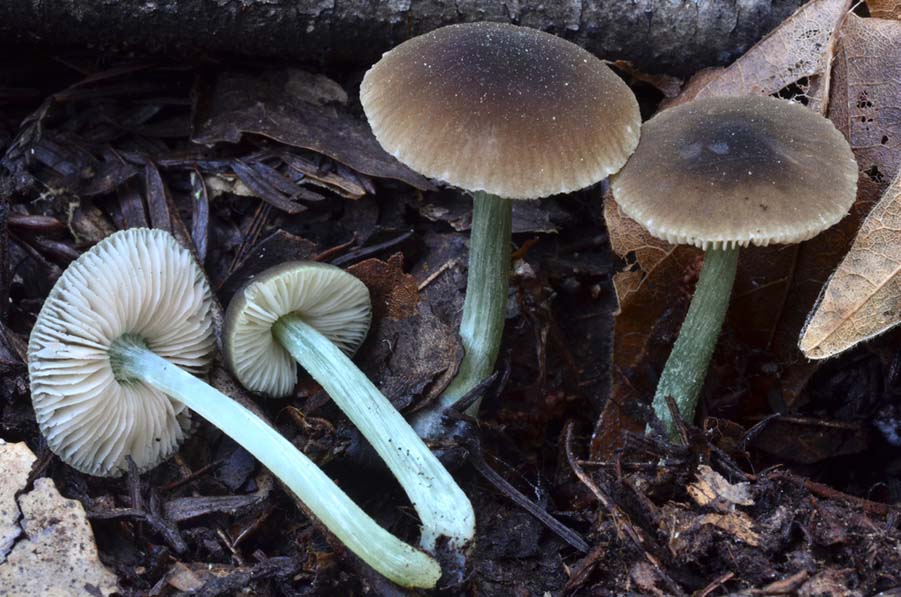
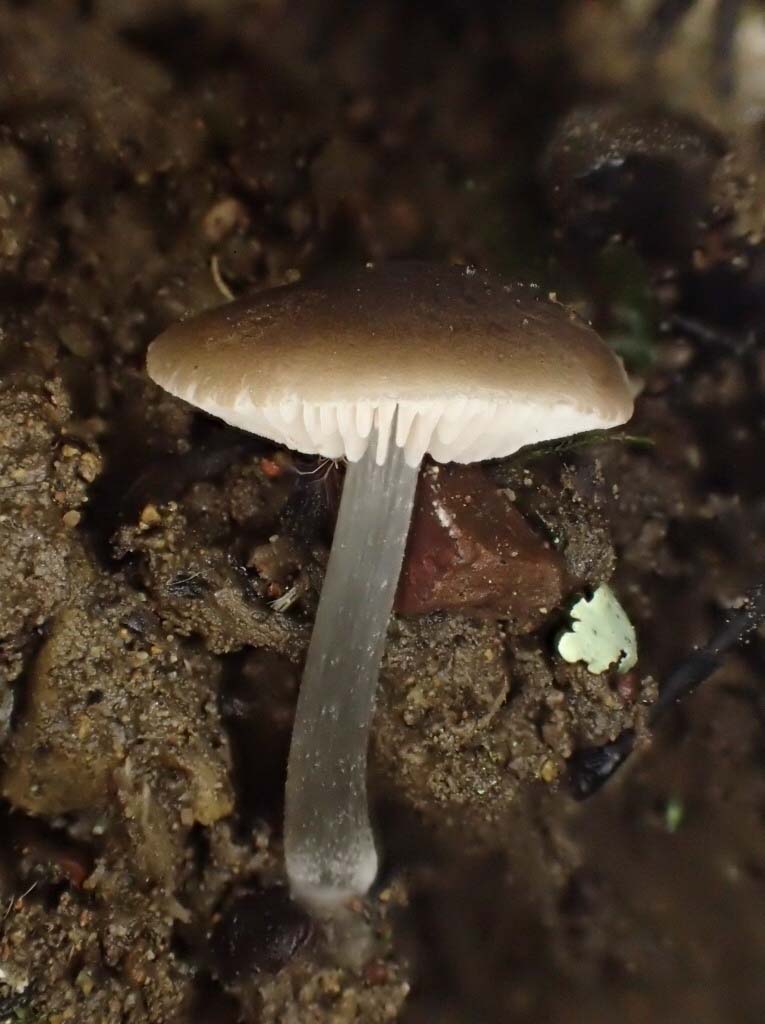
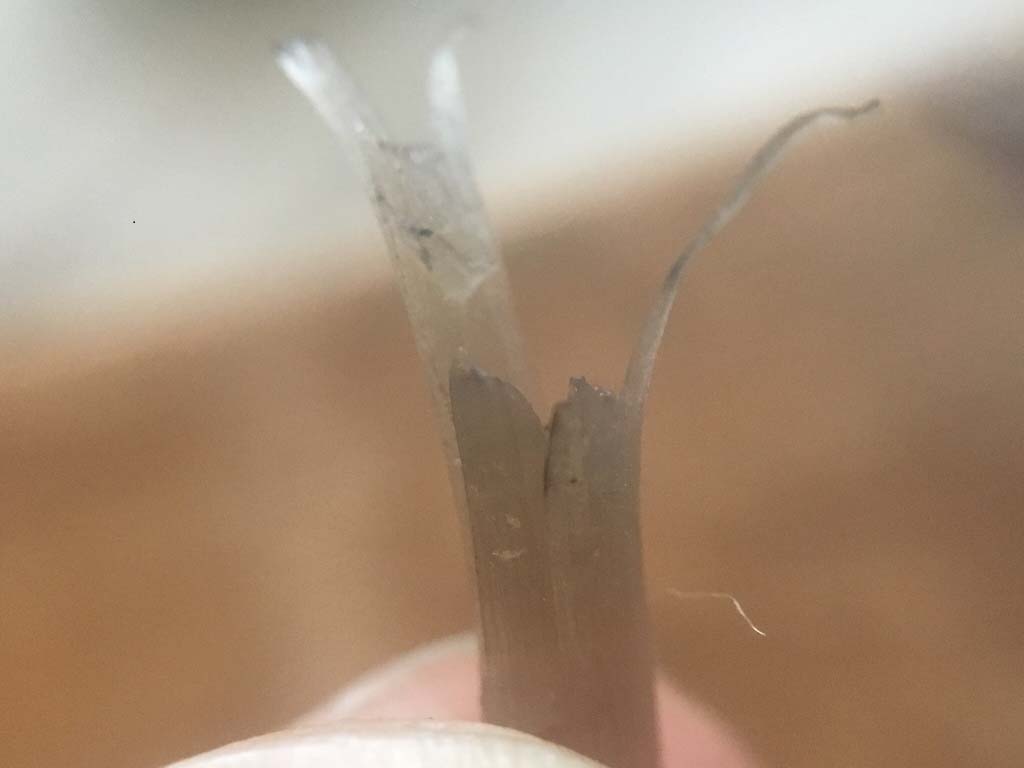
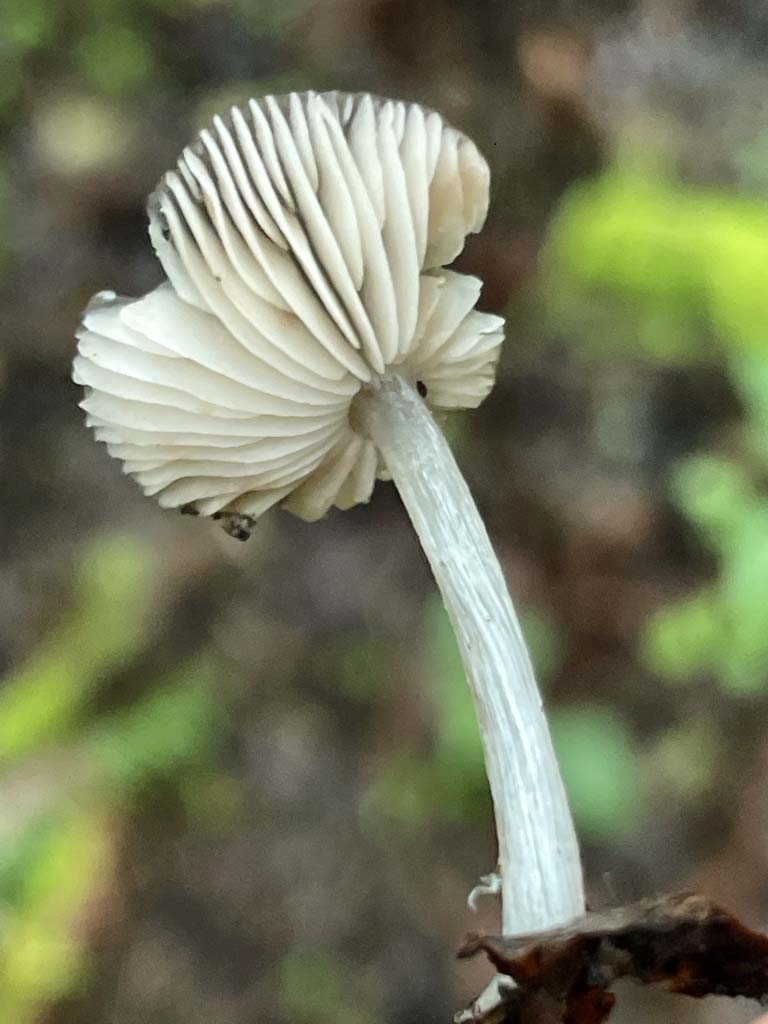
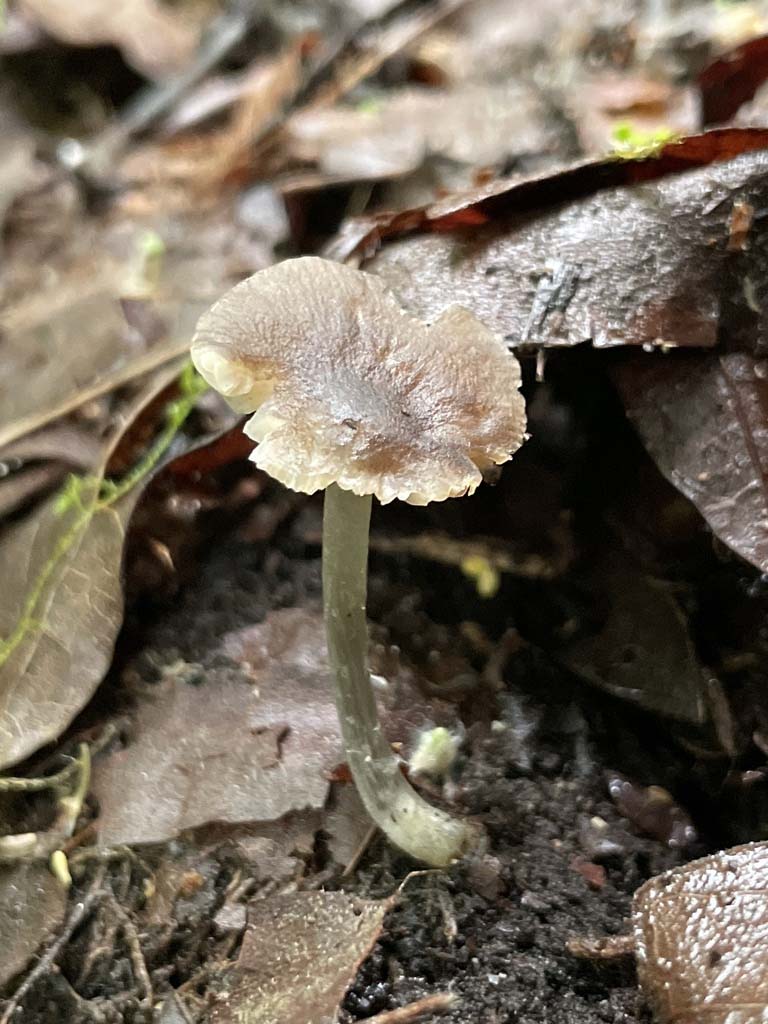
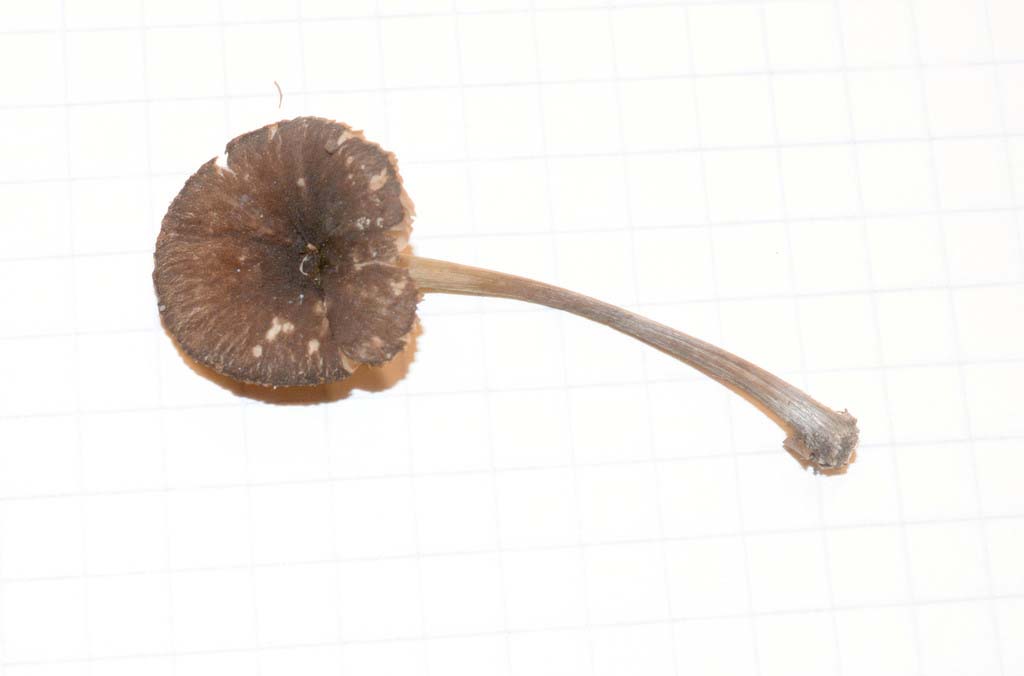
unsequenced possible Pluteus phaeocyanopus (from CA) © Christian Schwarz, P. 'nanus PNW01' (2 images) © Damon Tighe,
P. 'nanus
PNW02' (2 images) © Yi-Min Wang, P. 'nanus PNW15' © Danny Miller
Pluteus tomentosulus NY - this cottony capped all white Pluteus
could be mistaken for a Volvariella if the lack of volva isn't noted,
and since many Pluteus seem to have albino forms, every all-white
collection is not necessarily this. Sequences
from WA and OR match sequences from ENA, where is was described. One microscopic
analysis failed to find rounded elements in the cap cuticle, but the genetics
clearly place this species in section Celluloderma.
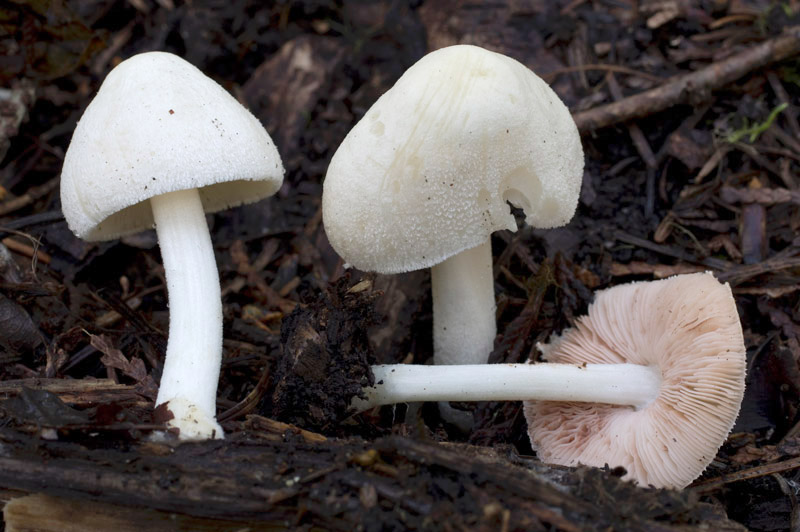
Pluteus tomentosulus © Andrew Parker
Pluteus 'thomsonii PNW04'
- this usually smallish, nondescript tan capped species is
supposedly especially susceptible to
wrinkling and reticulation. However, all three west coast collections lack
that, so this species is usually nondescript and resembles P. inflatus, described next,
except with larger spores 8.5-9.5 x 6-7 µm. Two local sequences
and several CA sequences are 3%
different from UK/EU sequences. There is a paper in the works to describe this sister species. An unsequenced collection with a strongly reticulated cap,
once thought to be
this species, is shown below along with a sequenced collection that was very
nondescript. We need collections with a strongly reticulated cap.
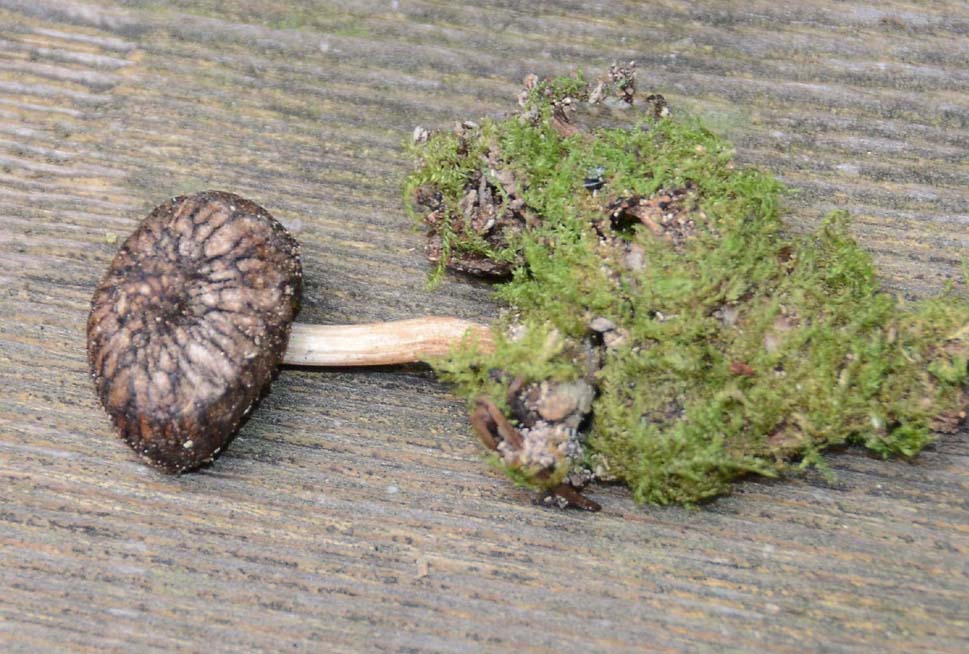
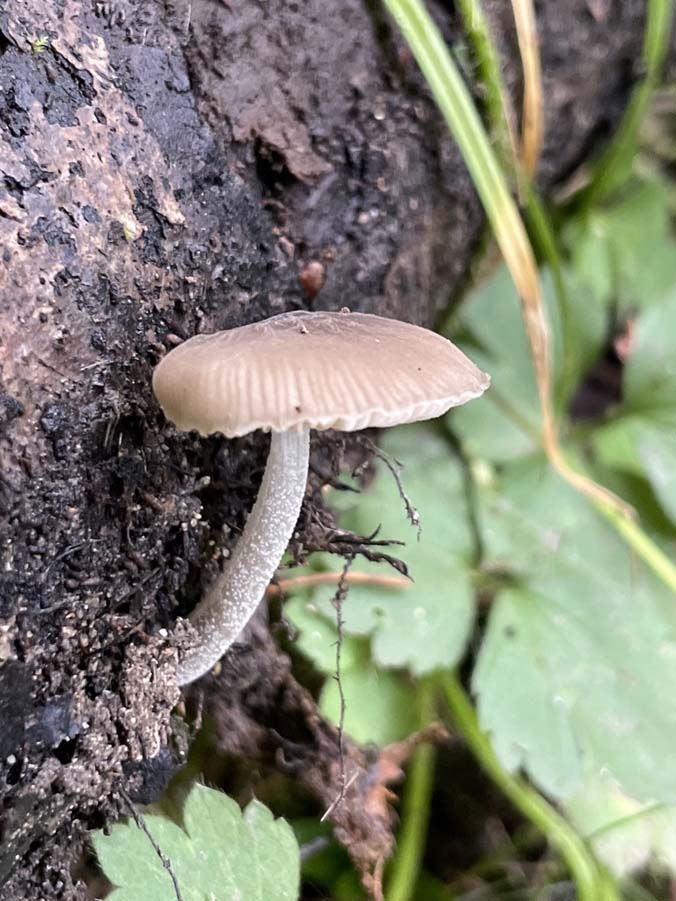
Unsequenced Pluteus © Danny Miller,
P. 'thomsonii PNW04' © Yi-Min Wang
Pluteus inflatus EU
- also drab but without the blue tinge to the stem, also with roundish
spores about 5.3–6.2u in diameter (smaller spores than the lookalike P. 'thomsonii
PNW04'). It lacks pleurocystidia and was found
once in WA in an urban setting. Members of the Pluteus podospileus
complex vary by as much as 15% in ITS from each other, and this is the only
member of that complex known from the PNW so far.
Pluteus PNW13 - similar,
in the P. inflatus/podospileus group but still unnamed. No word on how to
recognize it yet, although the cap seems dark and textured.
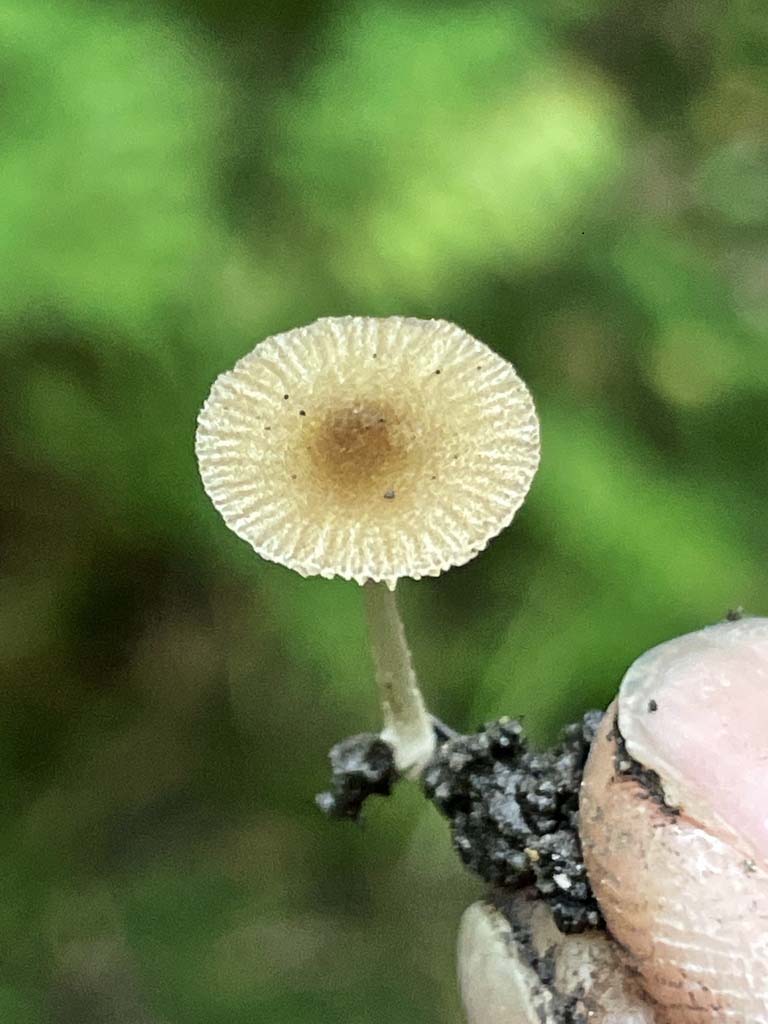
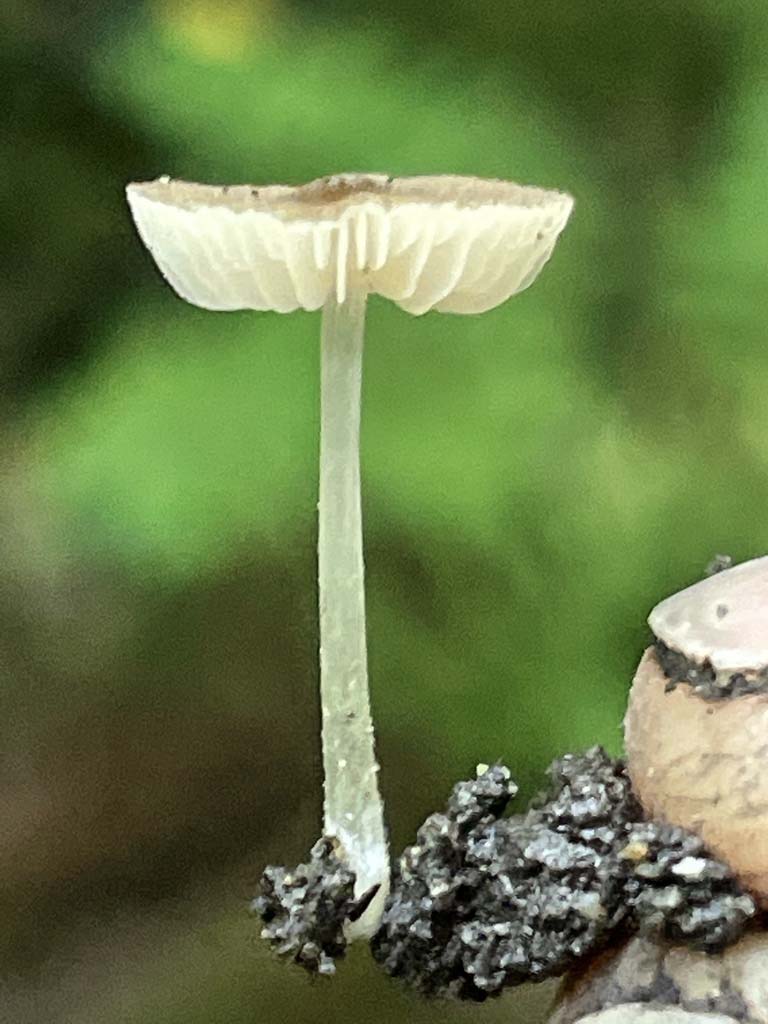
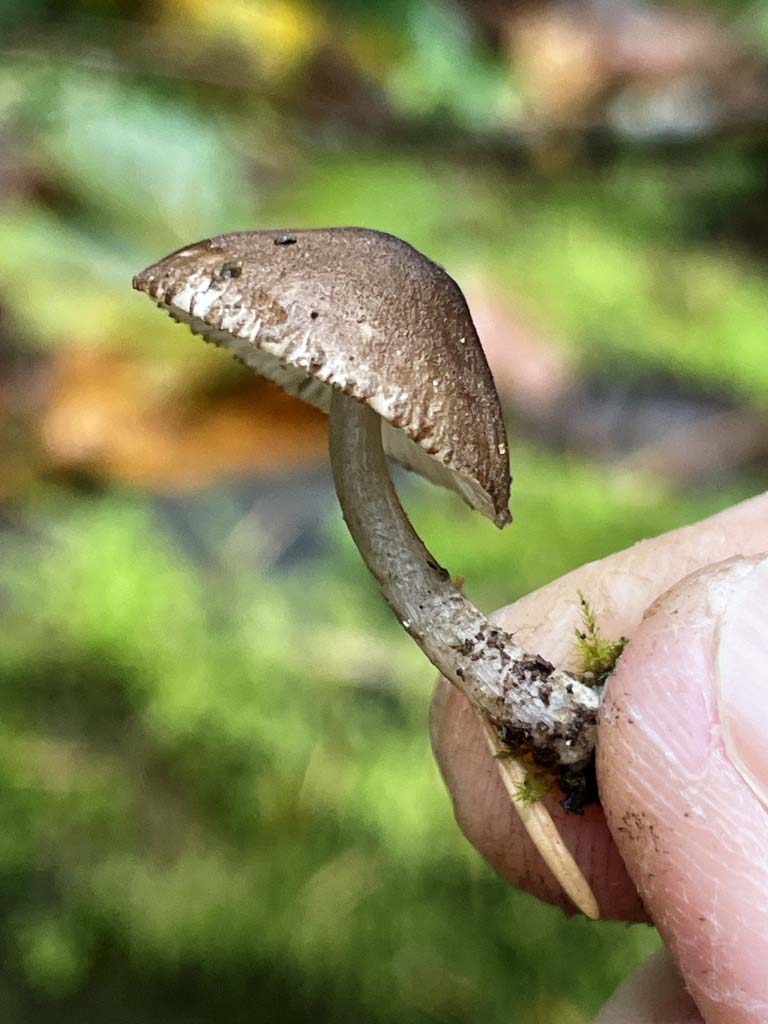
Pluteus inflatus (2 images) © Yi-Min Wang, Pluteus
PNW13 © Yi-Min Wang
Pluteus 'hispidulus PNW12'
- One lone OR collection sequences about 10% away from a lone EU sequence
labeled Pluteus hispidulus, but Justo saw the sequence and concluded ours
was most likely a species in the P. hispidulus group. It is only known
from this one collection. It can be differentiated from other species in this
section by a distinctly fibrillose dark brown cap. Similar looking species are
found in section Hispidoderma.
Pluteus PNW14 - one WA
collection also has a scaly cap like Hispidoderma members, but presumably
also a cellular cap cuticle.
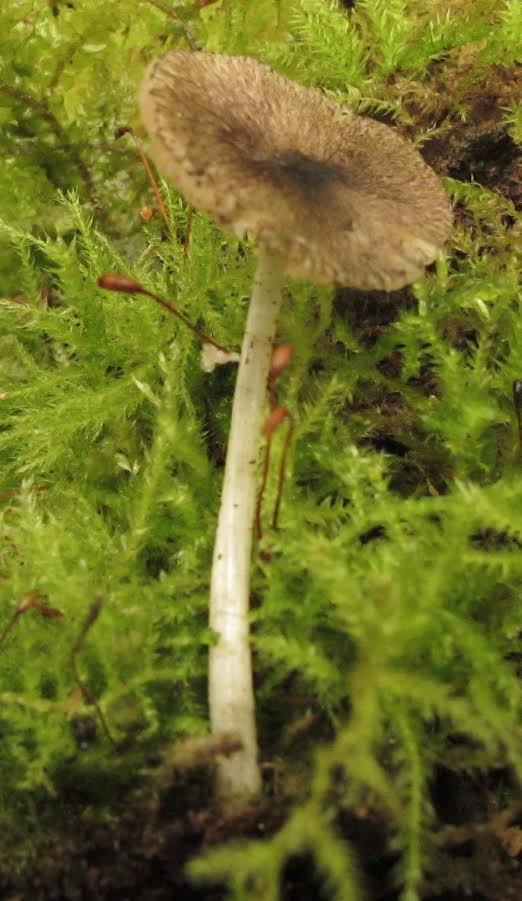
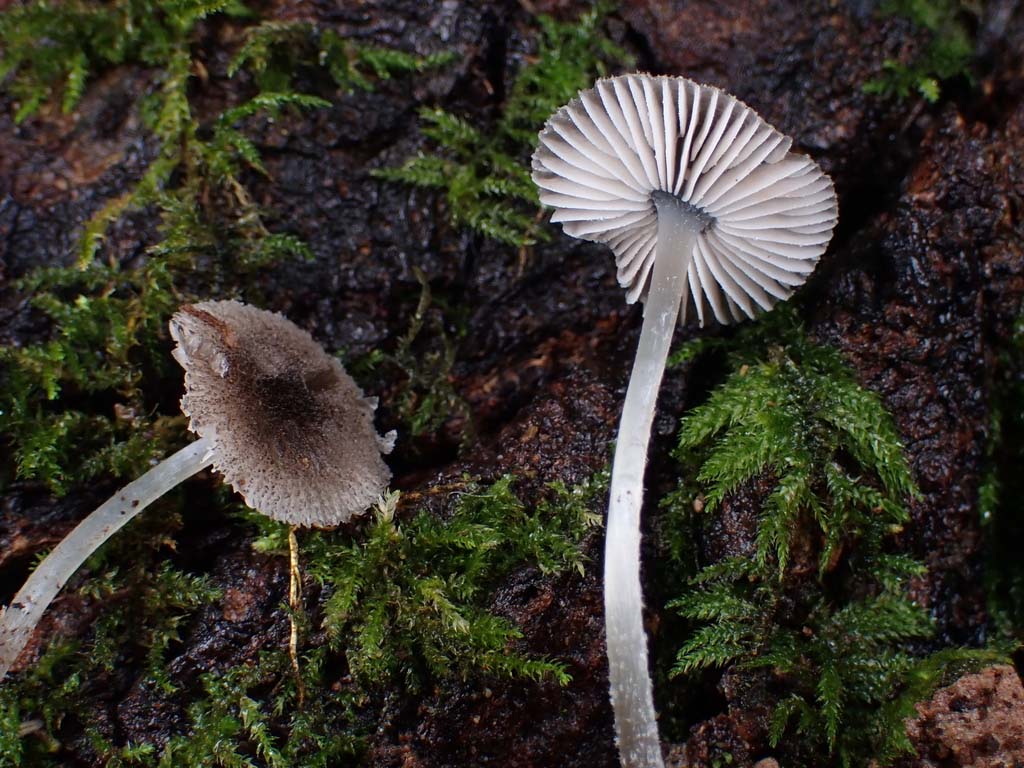
Pluteus 'hispidulus PNW12' © Leah Bendlin, P.
PNW14 © Matthew Koons
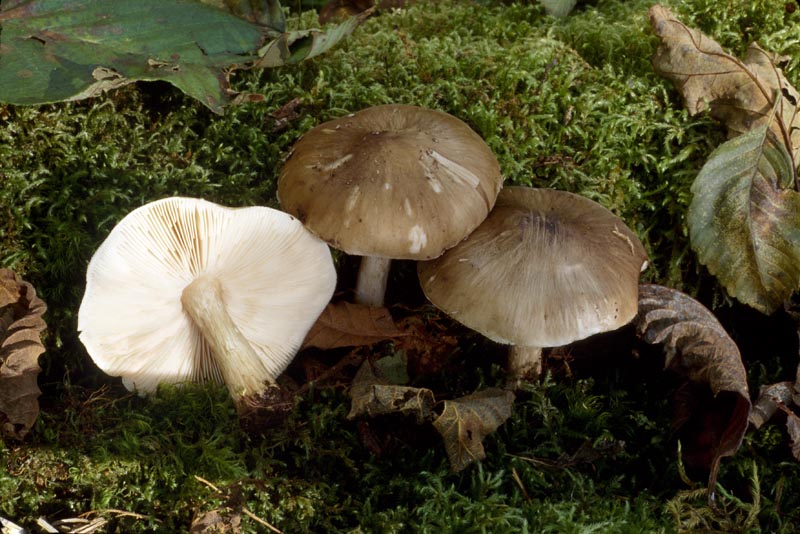
 Pluteus section Pluteus - click to expand
Pluteus section Pluteus - click to expand
 Pluteus section Celluloderma - click to expand
Pluteus section Celluloderma - click to expand
 Pluteus section Hispidoderma - click to expand
Pluteus section Hispidoderma - click to expand
 Volvopluteus - click to expand
Volvopluteus - click to expand
 Volvariella - click to expand
Volvariella - click to expand